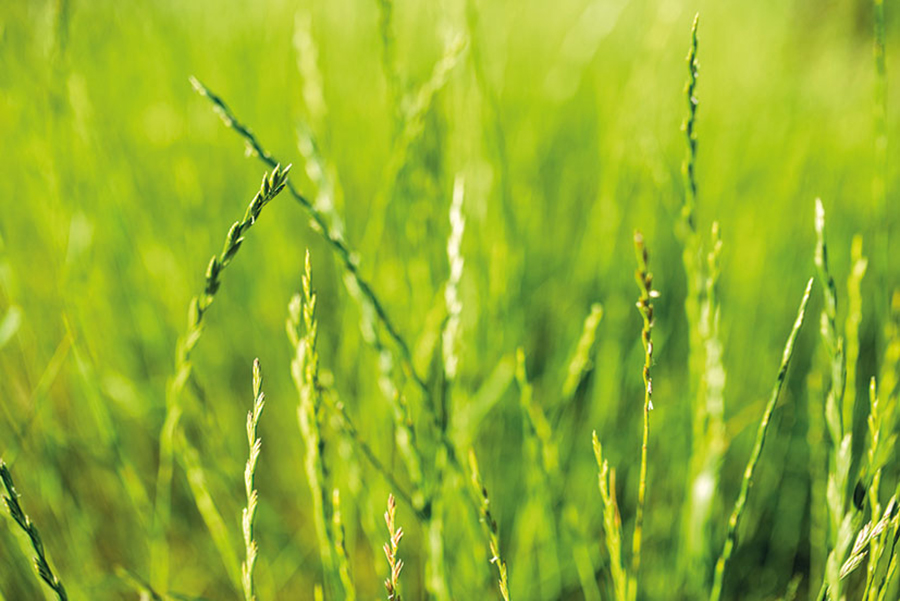Striking a balance – the great drilling date debate
1st August 2024
After a difficult autumn, there is an understandable tendency to drill earlier next season to guarantee wheat area. But what impact could this have on weed control?

The dreadful weather during autumn and winter 2023/24 took its toll on wheat crops. The overall area fell by around 20% and many crops have been dogged by the effects of poor establishment, including high weed numbers and lower yield potential. But with black-grass and Italian ryegrass a persistent problem on many farms, how can farmers strike the balance between the economic and weed control optimum for drilling?
“Drilling later is a straightforward way to reduce black-grass and Italian ryegrass numbers,” says Bayer agronomist, Jamie Oakley. “In benign autumn weather conditions, it works with no real downsides. But weather forecasts more than one week ahead are not particularly accurate, so there is always some risk and uncertainty until you actually drill the crop.”
Economic optimum
Drilling in mid–late September is generally considered the optimum time for maximising yield in wheat crops. Crops have time to become well-established before winter and are better able to cope with difficult weather conditions.
Analysis of 82 Recommended List varieties from 2010–14 showed a 0.27% yield loss for every day drilling is delayed after 1st September in a weed-free situation with no other agronomic issues. This would mean an 8.1% yield loss from delaying from 20th September until 20th October, equivalent to approximately 1t/ha in a typical wheat crop.
“There are also the psychological and practical benefits to completing drilling early,” says Mr Oakley.“ You can focus on other tasks around farm and start planning for spring. But if weed populations are high, any peace of mind is illusory because weed control will become a drain on time and money until harvest.”
Weed control optimum
“There have been many trials which investigate drilling date, and they all reach similar conclusions that mid-October drilling is better for weed control for two reasons. Firstly, the peak germination period of black-grass and ryegrass is typically late September to mid-October. The more of this that happens outside the crop, the better as it’s easy to control with Roundup (glyphosate).
“Secondly, conditions are better for pre-em performance later in the season. Soil mobile actives like flufenacet benefit from additional soil moisture to reach the tiny roots of germinating weeds. Also, cooler weather slows down the degradation of actives so they control weeds for longer.
Mr Oakley points out that irrespective of when you drill, make sure there is time to apply residual herbicides ideally at the true pre-em timing. Many crops were left unprotected because of rain last autumn contributing to significant weed problems. Another thing to add in late drilling’s favour is that it can also contribute to BYDV and disease control.
Consequences of grassweeds
The potential yield gain from earlier drilling can be wiped out by the effects of weeds in the crop. An AHDB led study conducted by Rothamsted and NIAB found that 100 heads black-grass/m2 causes 1.08 tonnes of lost yield. Black-grass typically has 5–10 tillers, meaning that plant counts of 10–20/m2 are enough to lose more than 1 tonne in yield. Previous research from the mid 1990s arrived at a similar conclusion that 25 plants/m2 would result in a 10% yield loss on average.

Striking a balance
Despite all the sound reasons to delay drilling, a dark cloud looms. If serious rain sets in like last year (and 2019), too much land will go undrilled. Set against this is the unlikelihood of such widespread bad weather again with many places receiving 50% more rain than average over autumn and winter.
“There isn’t a simple answer about when to drill. It’s about balancing the risks, using local knowledge and having a plan if things go wrong. The starting point should always be to get the crop properly established which helps weed control right through the season. Then look at prioritising fields by risk, start with the cleanest fields and finish with the worst. That way, if things do get rained off, the worst field gets a spring crop which will help with long-term weed control – although I appreciate that spring drilling was difficult for many this year. In those high-pressure fields, going early is a false economy because you may have to write off the crop and drill again. If you end up drilling again, check the labels of any herbicides you’ve used carefully for rules on following crops.”
Mr Oakley emphasises that late drilling isn’t an all or nothing decision – even a few extra days delay can make a difference.
“Early October is peak germination for black-grass and ryegrass, so waiting another four or five days will help to control many more weeds before drilling the crop. You can base these short delays on the weather forecast rather than sticking to a timetable. Having some flexibility and being prepared to drill and spray at fairly short notice will help strike the balance between getting drilled up and good weed control.”
Read more arable news


